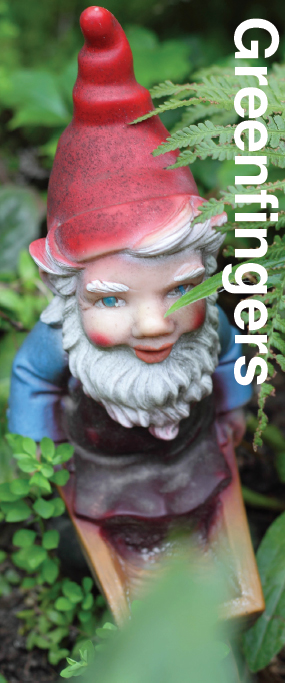Water is
running out

The present water crisis
in South Africa, and the
possibility that it may be a
long-term situation, has meant
that we need to find innovative
ways to build roads. Water-wise
construction means that SANRAL
has to conserve water, as well as
use it efficiently.
There are three main ways to do
this:
South Africa is an arid country that has sufficient groundwater recharge from reasonable rainfall most of the time. Water sources other than surface and ground water need to be developed, including acid mine water, seawater desalination, groundwater augmentation, deepseated shale gas fracking water and deep-seated geothermal water. Groundwater augmentation entails adding excess water into the ground using recharge boreholes. This water reaches the water table and is added to the groundwater reservoir. Groundwater is a renewable – yet limited – resource with a storage capacity that provides a large and extensive distribution of water supply.
2. Material modification and water conservationUsing and modifying construction materials that use minimal amounts of water. Some of these ‘problem materials’ form holes
when combined and used with other materials to construct roads. These holes allow water to fall through and waste water that needs to be saved. Through nanotechnology, it is possible to modify these problem materials by covering them with ‘mini raincoats’– a layer of coating that allows these elements to be combined successfully. This ensures that these minerals will not form holes when used to construct roads.
3. Desalination of seawater (ROC process)‘Osmosis’ is the natural process by
which a concentrated solution migrates
towards a less concentrated solution
across a membrane, so that the two
solutions have the same concentration
of solutes. ‘Reverse Osmosis’ means
taking the lower-concentrate solution
and concentrating it.
The reverse osmosis cooling (ROC)
process involves removing solutes
(such as salts) from seawater and acid
mine drainage. The salts are removed
using a semi-permeable membrane
(like a screen door that allows certain
solutes to pass through while blocking
others), using a high-pressure pump
and electricity, which removes 90-95%
of the dissolved salts and leaves the
water safe for human consumption.
It can be successfully implemented
in old mining and coastal areas with
limited or no water for construction.
It will ensure sustainable economic
development, in high-risk metros and
local municipalities, as well as feasible
villages.

Orange Ginger
Lily Criminal
One of my favourite experiences
in life is the discovery of
a beautiful new flower in
my garden. I’m in awe of nature’s
perfection, displayed in the exquisite
colouring and delicate crowns of all
flowers.
Earlier this year, I became aware
of a strong new plant, which seemed
to be flourishing, under one of the
trees at the bottom of my garden and
attributed it to all the wonderful rain
we’d had. I didn’t remember planting
anything there, but decided to wait
and see what it had to offer.
In my wildest gardening dreams
(yes, gardening dreams can be wild), I
never imagined my garden being host
to a bejewelled plant! This mystery
plant sported five magnificent flower
spikes, each one 39cm tall, multiple
delicate orange and white blossoms
on each stem with long graceful
stamens in deep red. Bees were
buzzing around the flowers, clearly
applauding its majestic displays.
A bit of research revealed the
following:
1. This beauty is called Hedychium
Coccineum (meaning: sweet
snow); common name Orange
Ginger Lily.
2. Cultivated in glasshouses in Britain
in the late 18th century, but only
identified and described in Hawaii
in 1888. Native to China, Taiwan,
Myanmar and the Indian Subcontinent.
Grows wild in Cuba and
is naturalised in Australia and
South Africa.
Then the clincher:
3. It is listed in the Global Invasive
Species Database (GISD 2008) as
a ‘noxious weed’ and NO
LONGER TOLERATED! It stands
accused of smothering other plants
because of its prolific growth and
being invasive along riverbeds and
various natural wetlands.
(On a personal note: I know some
invasive people, but I’m not
allowed to get rid of them.)
4. My flowerbed is a criminal!
Now I have a decision to make:
keep this amazing plant in my garden
for its ornamental value (and it is
beautiful), or dig it out and burn it
to prevent it from spreading and
invading the whole of Gauteng.
Destroyer of nature’s beauty or
environmental criminal?
Hmmm, let me think…